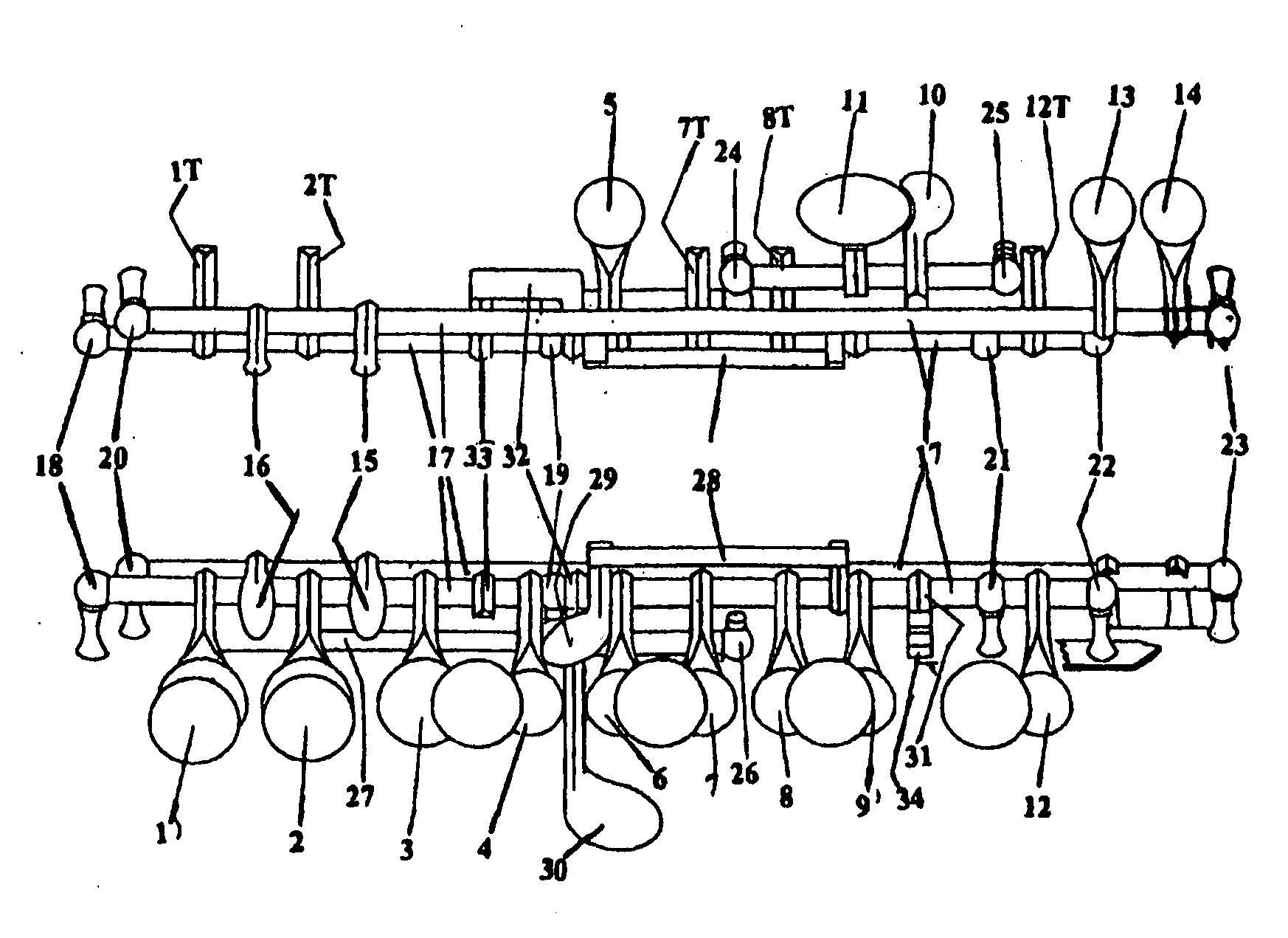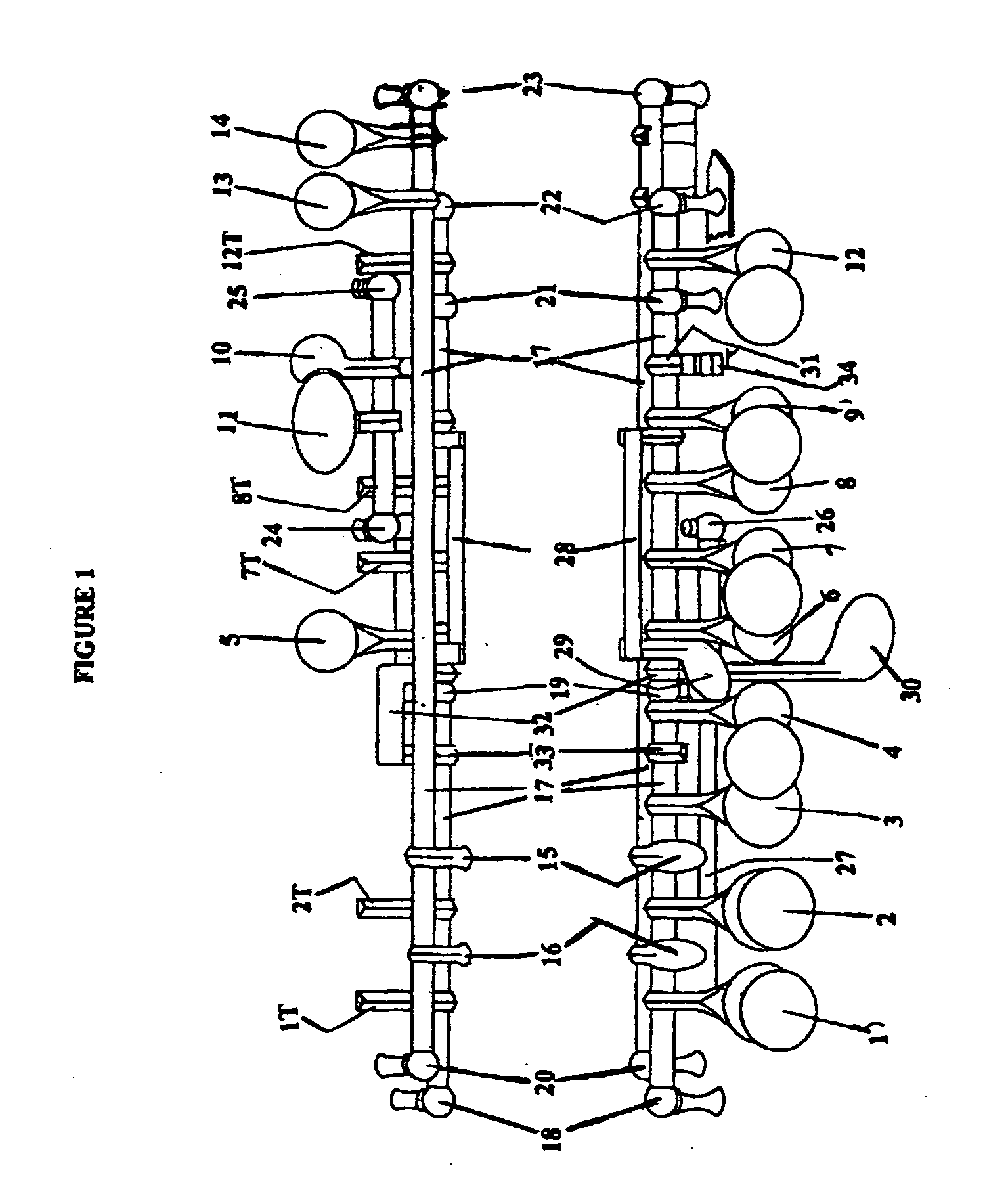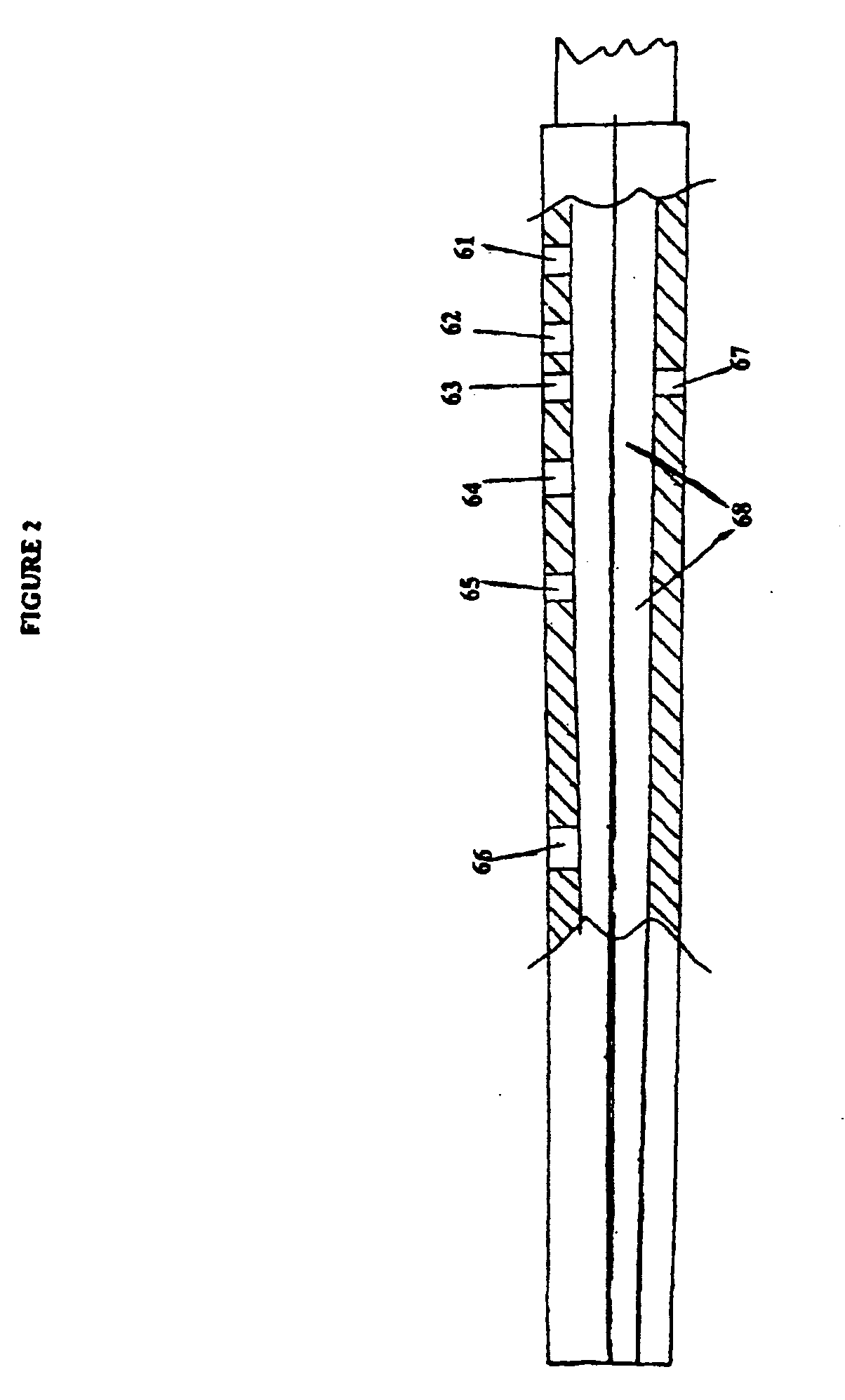Conical piccolo
a piccolo and conical technology, applied in the field of conical piccolos, can solve the problems of difficult and awkward fingering required to create accurate and in-tune trills, difficult implementation of all of them, and the mechanical problem of the third octave g/a trill, etc., and achieve the effect of improving clarity, repetition and intonation
- Summary
- Abstract
- Description
- Claims
- Application Information
AI Technical Summary
Benefits of technology
Problems solved by technology
Method used
Image
Examples
Embodiment Construction
[0039]In one embodiment, the instant invention introduces the correct venting for each note in the G / A trill on the conical piccolo, while not limiting the availability of any of the standard six trills found on the cylindrical flute C sharp trill. FIG. 1 illustrates the standard conical piccolo mechanism built by nearly all modern piccolo and flute makers, known as the Boehm system.
[0040]The standard conical piccolo mechanism includes a D key 1, a D key tail 1T, an E key 2, an E key tail 2T, an F key 3, an F sharp key 4, a G sharp key 5, a G key-lower cup 6, a G key-upper cup 7, a G key tail 7T, an A key 8, an A key tail 8T, an A sharp key 9, a Thumb B flat key 10, a Thumb B natural key 11, a C sharp key 12, a C sharp key tail 12T, a D trill key 13, a D sharp trill key 14, a D trill lever 15, a D sharp trill lever 16, tubing 17, a D post 18, an F sharp post 19, a Lower trill post 20, a Lower C sharp post 21, an Upper C sharp post 22, an upper trill post 23, a lower thumb post 24, a...
PUM
 Login to View More
Login to View More Abstract
Description
Claims
Application Information
 Login to View More
Login to View More - R&D
- Intellectual Property
- Life Sciences
- Materials
- Tech Scout
- Unparalleled Data Quality
- Higher Quality Content
- 60% Fewer Hallucinations
Browse by: Latest US Patents, China's latest patents, Technical Efficacy Thesaurus, Application Domain, Technology Topic, Popular Technical Reports.
© 2025 PatSnap. All rights reserved.Legal|Privacy policy|Modern Slavery Act Transparency Statement|Sitemap|About US| Contact US: help@patsnap.com



